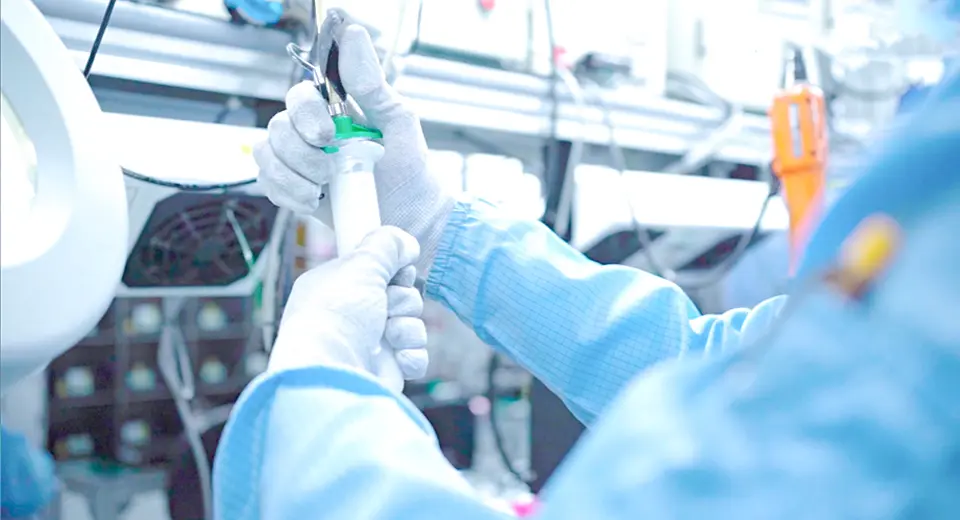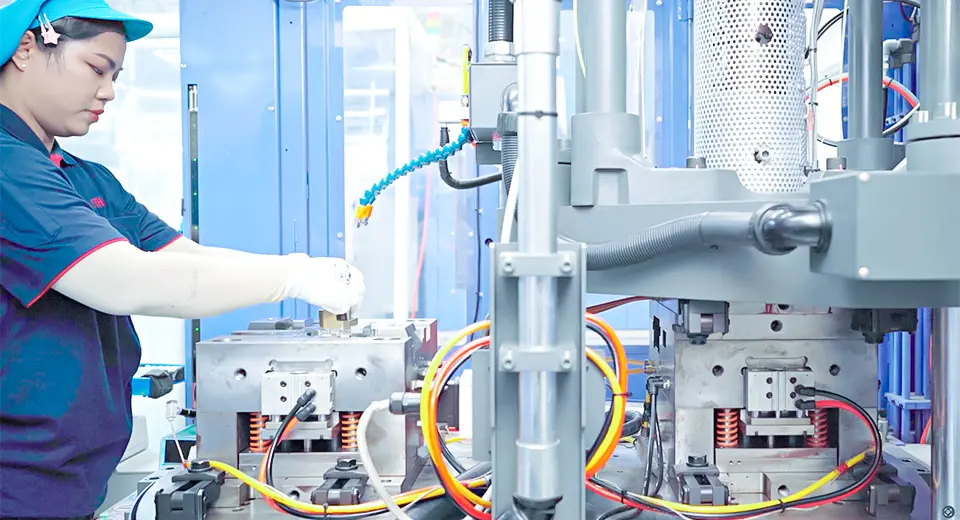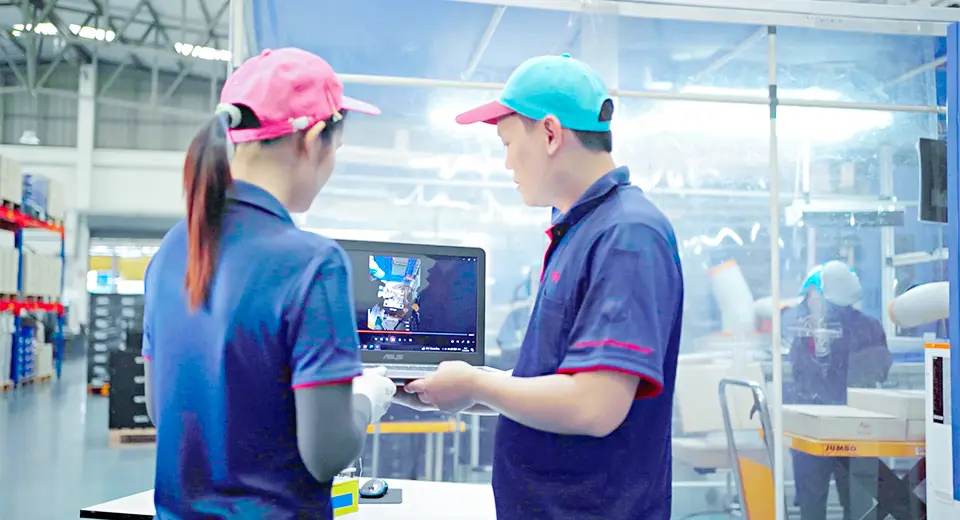Achieved a Fast Start-up of Production Lines
Nakamura Electric Industry Co., Ltd.
Automotive Parts Industry
- Challenge of Producing In-house
- Automotive Parts
- Improving Production Line Efficiency
- Factory IoT
- Improvement










Nakamura Electric Industry Co., Ltd.
Automotive Parts Industry
Nakamura Electric Industry Co., Ltd, a manufacturer of automotive resistors, has decided to produce core components in-house to gain a new competitive advantage both domestically and internationally. With a strong desire to be a company that continues to evolve, our encounter with DENSO's Factory IoT was a turning point.
DENSO's support and utilizing Factory IoT were a great help in challenging in-house manufacturing, which we have never tried before. Even in new manufacturing processes where we had no know-how, we were able to improve productivity in a short term by identifying issues and improving based on data. In addition, a kaizen culture has taken root throughout the company, laying the foundation for sustainable improvement.
In addition to the long-standing assembly-centered business structure, we took on the challenge of manufacturing core components in-house to gain new competitive advantages both domestically and internationally. However, during this great challenge of in-house production, we found ourselves in a situation where we did not know where to start. The turning point was our encounter with Denso's Factory IoT.
The first project to implement Factory IoT was to improve the power transistor line. Data analysis revealed that the problem was frequent production line stoppages. We focused particularly on the grease refilling process.
In the past, when the grease in the cylinders ran out, workers had to leave the production line to refill them. Data analysis using the Factory IoT clearly showed how big the impact of this problem is.
As an improvement measure, we first considered enlarging the size of the cylinder. However, simply enlarging the size of the cylinder could worsen workability. To solve this problem, we developed a new device that fixes the cylinder and applies a certain amount of grease by pushing a bar. This enabled efficient grease application even with large cylinders.
We also reviewed our work process to reduce wasted motion in refilling grease. Another worker refills the spare cylinder in advance and puts it on the workbench so that the operator only needs to replace the cylinder on the spot. As a result, grease refilling time was reduced by 70%.
We also improved the terminal soldering process. Video analysis revealed fluctuations in operation time and individual differences due to manual work. This led us to standardize the process, including optimizing the preparation.
These improvements have significantly reduced work stoppages. Factory IoT and data analysis helped us clarify issues that we had not noticed for years and led to effective improvements.

Following the improvement of the power transistor assembly line, we began to improve the resin molding process. We have achieved remarkable results, especially in air blowing, terminal insertion, and training of new workers.
First, in the air blowing process, the operation fluctuated by workers and they tended to be more careful than necessary. To eliminate this waste, we introduced an automation system, which air is blown for a certain amount of time with just pressing a button. As a result, we achieved work homogenization and time reduction, resulting in a 60% reduction in cycle time.
Next, in the terminal insertion process, the terminals with complicated shapes had to be pushed in one by one by hand, which took a lot of time and resulted in many failures. So, we developed a new jig based on video analysis and made it possible to insert 4 terminals at once. As a result, we were able to shorten the operation time from 21 seconds to 17 seconds.
In addition, utilizing Factory IoT has been successful in educating new workers. Since the data clearly shows the differences in work tendencies between experienced workers and new workers, we show videos of experienced ones working to the new ones. By comparing overhead videos, new workers can understand the differences well and grow in a short term.
At the same time as these improvements, we also worked to reduce machine time waste, receiving advice from DENSO. We adjusted machine motion to improve efficiency and set a goal of synchronizing machine time with worker time. As a result, it is now possible to operate the production line at almost the same time, leading to a significant increase in productivity.

The introduction of Factory IoT has innovated our human resource development and kaizen culture. Visualization of data has clarified room for improvement and increased motivation for improvement throughout the company. A particularly striking achievement was the ability to realize problems brought about by the Factory IoT. The realization that operations were stopped for such a long time had a great impact on the workers. This awareness motivated the workers to proceed improvements.
Our improvement is supported by a strong cooperative relationship with DENSO. The major difference between DENSO and other companies is that they go into every detail to identify problems and propose the best approach. Also, when we have a defective product, they work with us to identify the cause and come up with improvement plans. This partnership has greatly encouraged our improvements.
In addition, the concept of lean manufacturing has had a great impact on us. We are amazed and inspired by the thoroughness of trying to improve efficiency in automotive-related manufacturing. However, it is not easy to put these ideas into practice. Especially in overseas factories, communication to promote improvement takes time due to differences in language and culture. However, in some cases, long-standing problems can be quickly improved because data and video enable smoother communication.

We are currently focusing on utilizing Factory IoT in our aluminum processing and trying to make further improvements by adding more cameras, etc. After improvements in aluminum processing, we plan to introduce Factory IoT in SMT. We clearly identify issues in each process utilizing this step-by-step approach and plan for effective improvements. After improving one process, we move the IoT tool to the next process, which is easy. It requires a minimum number of workers, and we don’t have to purchase a lot of equipment.
Times are changing so rapidly that we believe a company will not last if it only does the same thing. We must constantly innovate to survive. It was out of this sense of crisis that we decided to manufacture some components in-house. Further change and innovation will be essential as competition intensifies, not only domestically but also internationally.
With Factory IoT, this great challenge is steadily bearing fruit. We will continue to improve our productivity and competitiveness by data analysis using Factory IoT, and by continuing to implement the improvement cycle.
We will lay the foundation for maximizing productivity and improving your manufacturing site with advice based on our skills and experience. Please feel free to contact us for more information.
The Future of Factories Begins Here.

